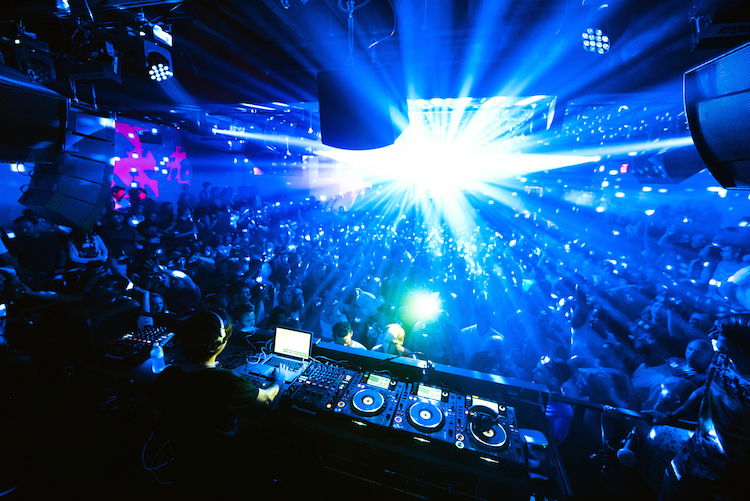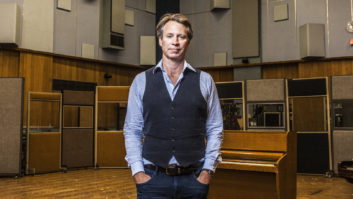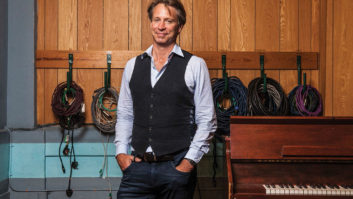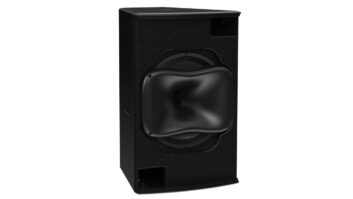
ITI Audio, designer of award-winning systems for clubs such as Washington DC’s U. Street Music Hall, have achieved what they consider to be their “best work” using Martin Audio loudspeakers and line array enclosures at Verboten in Brooklyn, New York.
In less than a year, Verboten has quickly become one of the leading clubs in what Time Out New York calls “New York’s new clubland paradise,” Brooklyn’s Williamsburg section. With a hard-edged, post-industrial exterior, Verboten’s overall aesthetic is dark, unfinished steel and wood. The music, described on their website as “underground dance music in all its forms,” includes house, techno, deep house, bass music, live electronica, indie dance and nu disco.
With a 20-year history in the dance music promotion business, owners Jenn Schiffer (booking and operations), her husband/partner John Perez (A&R and promotions) and co-owner Michael Roche (director of production), have created the ideal permanent venue for the most evolved expression of dance music, culture and lifestyle in the 10,000 square-foot former metal shop.
Bill McClure, a principal at ITI Audio, describes what the owners were originally looking for: “When they came to us, they wanted audio to be the primary focus for the space, which was refreshing.”
Verboten consists of the larger Control Room, designed for showcase dance music events, concerts and private parties, which has skylights, acoustic ceiling panels, panoramic edge-blended projection, raised seating areas, and a sprung wooden dance floor from a warehouse once owned by Thomas Edison.
The room’s elaborate Martin Audio sound system is capped off by two hangs of eight W8LM line array cabinets and two W8LMD downfill boxes with four WMX hybrid folded horn subs and two W8VDQ three-way enclosures for rear fill. Five WS218X sub-bass systems form the sonic centerpiece for the room.
As Bill explains, “There’s something about those incredibly reliable Martin Audio bass bins, they just work better than other stuff available in the market today. They can get super-loud, take a beating, and they have a super-nice frequency response. The musical tone and percussive feel are way better than the competition. That’s why we use WS218X’s pretty much for every club we do.
“The system has a lot of horsepower with really good coverage and the Martin Audio line array is ideal for concerts, because the owners wanted increased and deeper coverage as they book more live artists in the future. The W8LM and W8LMD’s are hung in front of the WSX hybrid folded horn subs, which are awesome by the way. I love the way they sound.
“The two hangs are on both sides of the stage/DJ booth,” he continues, “which is completely modular so the stage can get pulled down and configured in many different ways. We actually put a pair of H3H+s on a trolley system on the stage, so if you move the DJ booth, the speakers can be moved to accommodate that. The monitors can slide from the center of the stage all the way out to stage left or stage right to accommodate different configurations. The H3H+’s sound is clear with a lot of punch and that nice dance club low-mid resonance.”
With the concentration of subs in the room, directly under the DJ’s, turntable feedback was a natural concern. As Bill points out, “while the WS218X sub bass cabinets do a great job delivering the energy on to the audience area with very minimal wasted energy, we needed a modular work surface/DJ booth that would provide acoustic isolation for the turntables, have a removable/changeable facade, include cable pass through, and be made in four identical sections 5′ wide and no more than 24″ deep. As no such thing existed, we designed a custom solution. After many calculations, a little tweaking, and some in the field engineering, we were able to deliver a finished product that was highly effective at mitigating feedback, unique and aesthetically pleasing.”
Adjacent to the Control Room is the Cabaret Bar ostensibly designed for day parties, art shows, cabaret, burlesque, karaoke and smaller weeknight events with a restaurant, sound absorbent curtains, neon chandeliers, overstuffed leather banquettes, a burned concrete bar and a Martin Audio sound system comprised of eight AQ15 compact full-range systems and 12 Blackline H3H+, three-way bi-amp fully loaded horns.
In addition to the loudspeakers, the overall system includes Martin Audio MA3.0. MA5.2K, MA9.6K and MA12K amplifiers; BSS Soundweb digital signal processing; a Midas fixed input rack, and two Cranesong HEDD A-D converters.
Asked about their client’s specific needs for the system, Bill responds, “Obviously, the system had to be able to crank, but the owners were more focused on smooth, even coverage with clarity and consistency throughout the venue. They wanted it to sound good in as many places as possible without overspending. To that end, they approved the purchase of a bunch of amplifiers to control the sound system, so that it performs really consistently at different volume levels with bass presence everywhere in the club. The sound can be sourced for both rooms, or they can have independent sources in both rooms. There’s a big set of steel doors between the two rooms, so bleed through isn’t bad.”
Explaining some of the system’s subtleties, Bill adds, “HEDD A-D is a stereo in/stereo out digital audio converter that converts analog to digital or digital to analog, depending on how you want to use it. We’re taking the output from the DJ’s, converting it to digital and then going digitally into four or five BSS processors from the Cranesong while clocking all the digital audio to the Cranesong as well, which give us a more robust sound.”
With the system in place and the club filling both rooms every weekend and most weeknights, we were curious how his clients were responding the Martin Audio system.
“The owners love it, they’re very pleased,” Bill concludes without hesitation. From the beginning, my partner Adam Weiner and I felt this was an opportunity to do our best work in terms of the outcome, overall sound quality and performance, and we definitely did that with this project.”
For more about Martin Audio, please click to www.martin-audio.com.
About Martin Audio®
Founded by audio engineer David Martin in 1971, Martin Audio pioneered the use of all-horn-loaded bass designs in world-class touring loudspeaker systems for groups such as Pink Floyd, ELP and Supertramp. Located outside of London, Martin Audio now embodies a sophisticated mix of acoustic design, research, mathematical modeling and software engineering for a wide range of products in the installation, cinema and touring sound markets.







